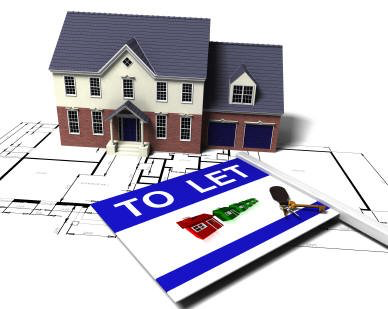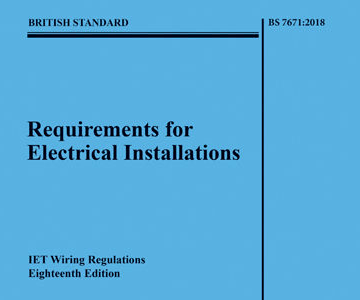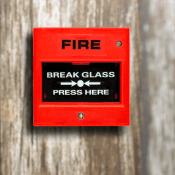Essex Electrical Maintenance Ltd
Idea
Design
Accuracy
Satisfaction

The Electrical Safety Standards in the Private Rented Sector (England) Regulations 2020
The Ministry for Housing, Communities and Local Government (MHCLG) has
introduced legislation for landloards in England to make it a mandatory
requirement to have electrical safety checks carried out in their
properties.
These electrical safety checks are to be carried out at intervals of no more than 5 years by a qualified and competent person.
This new legislation comes into force on 1st June 2020 for
Landlords in England for electrical safety checks to be completed on
their properties following the timeline below-
(a) all new specified tenancies from 1st July 2020; and
(b) all existing specified tenancies from 1st April 2021.

ELECTRICAL SAFETY CHECKLIST
DO’S AND DON’TS
HERE ARE 12 SIMPLE SAFETY TIPS TO HELP YOU AND YOUR TENANTS MAKE THEIR HOMES SAFER:
- DO get a full electrical inspection and test at least every 5 years or at change of occupancyDO carry out a regular visual check of the electrics every 6 months
- DO use an NICEIC or ELECSA electrician to carry out electrical work
- DO check for worn or frayed wires and cables
- DO check for signs of blackness or scorching around a socket, which could indicate overloadingDO check for broken electrical accessories, such as sockets and light switches
- DO check regularly for a smell of hot plastic or burning near a socket
- DO check for signs of sparks or smoke coming from a plug or appliance
- DO use an RCD (Residual Current Device) for added protection against electric shockDO test that the RCD is working every 3 months
- DO test the smoke alarms every week
- DON’T overload plug sockets

With the 18th Edition of the IET Wiring Regulations (BS 7671) now officially released, it’s a crucial time for electrical contractors and electricians to get up to speed with the changes. Essentially electricians now have a six-month period to ensure their house is in order because, from 1st January 2019, they must ensure they’ve achieved full compliance for any installation work designed from 31st December onwards.
The 18th Edition has updated standards in line with the latest advances in technology, including updates to technical data. These updates will have a direct impact on making installations safer. In addition, the 18th Edition contains a new appendix on energy efficiency, reflecting the country’s need to reduce the overall consumption of energy. For electricians to be ready for January, it is important to get to grips with the changes now.
Five key changes to be aware of:
Changes in regulations around fire safety, protection against voltage overloads, and wiring systems are all listed in the 18th Edition. This will impact how electricians perform their work from day-to-day, affecting the length of time spent at each install and the expenditure on equipment:
Recommendation for installation of Arc Fault Detection Devices
A new Regulation has been introduced recommending the installation of Arc Fault Detection Devices (AFDDs) to mitigate the risk of fire due to the effects of arc fault currents. This means that some circuits may now require the fitting of an AFDD to protect specifically against arc faults.
Requirements for metal cable supports
Currently, regulation states that only wiring systems located in fire escape routes must be supported against premature collapse in the event of fire. This will now apply throughout the entire installation, and wiring systems in all locations will need to have metallic clip supports. Not all clips will need to be metal, however – there just needs to be an adequate number in place – expected to be around 25%.
Requirements for RCD protection
With the exception of FELV and RLV sockets, all AC sockets that are rated up to 32A will require RCD protection, as opposed to just 20A. This is a life-saving regulation designed to prevent any electrical shocks to the installer working with live AC socket outlets. It means that electrical contractors will need to pay increased attention to the type of RCD being used, to prevent RCDs being ‘blinded’ by the current waveform.
Metallic pipes entering a building with an insulating section at their point of entry no longer need to be connected to the protective equipotential bonding
This regulation will require electrical installers to identify whether or not an incoming metallic pipe has an insulating section, to allow them to determine if they must add the protective bonding to the pipe.
Content relating to energy efficiency, devices for isolation and switching, and onshore units of electrical shore connections for inland navigation vessels has been introduced
Energy efficiency appears in new Appendix 17 in the 18th Edition. This provides recommendations on the design and erection of electrical installations for optimising the overall efficient use of electricity.
To prepare for full compliance with the 18th Edition, electricians can seek a range of AFDDs, varying RCD types (AC, A, B and F), and automation, control, software, and metering and monitoring products for Appendix 17’s energy efficiency application.
Other equipment that electricians ought to be sourcing includes metallic cable clips to provide support under fire conditions, and Surge Protection Devices (SPDs) for Section 443 applications.
However, the 18th Edition doesn’t just mean that electricians need to invest in new equipment. They’ll also need to plan and prepare for a revised installation process, potentially putting aside more time to conduct an electrical install. It could also mean that electricians will need to take a more active role in the architectural design process of a building to ensure it will comply with regulations.
It’s important that electrical professionals have a thorough understanding of the impact these changes could have on their daily operations. Improvements to safety are a necessary and positive step towards creating safer dwellings, but electricians must ensure they have the equipment and resources ready to adapt. By preparing now, the transition will run more smoothly.

Bishops Stortford OfficeUnit 1 The ParlourWoodside Green FarmWoodside Green, Bishops Stortford, Herts, CM22 7UP
CONTACT
01279 882 444jobs@e-e-m.co.uk
New Paragraph

